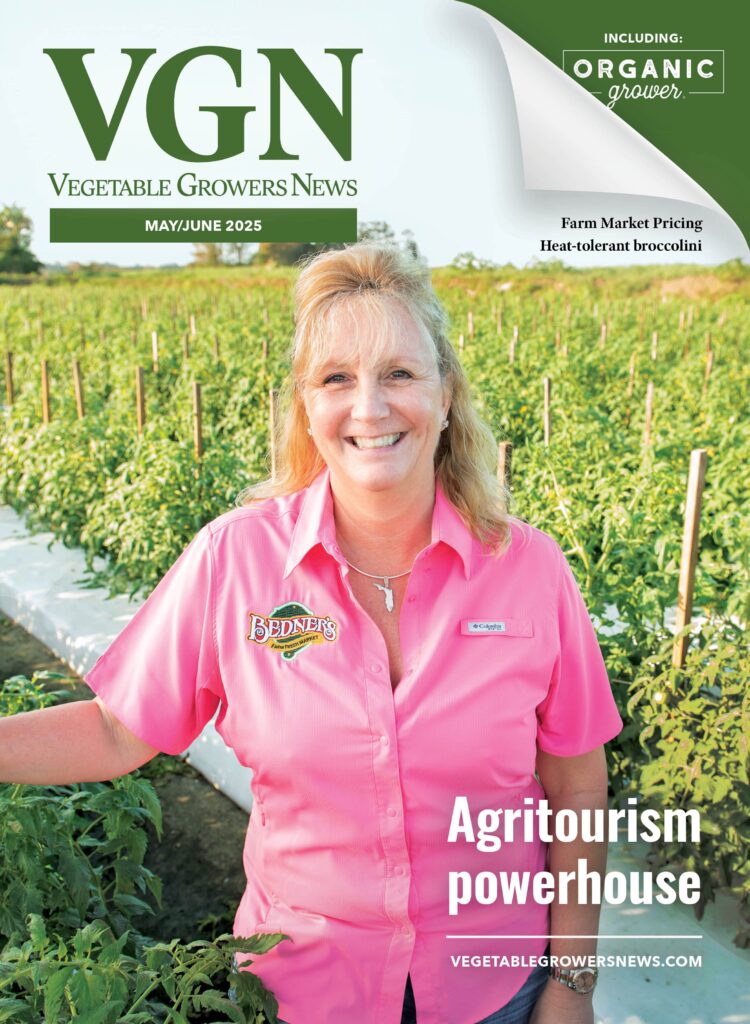Apr 3, 2024Syngenta highlights growth of crop protection products
Syngenta has three new crop protection technologies on the market that the company project to achieve “blockbuster status” within the next few years.
The products are part of a strategy to boost both the pace and quality of agricultural research and development. The three Syngenta trademarked active ingredients are on track to each achieve at least $1 billion a year in global sales.
TYMIRIUM
 This technology is a nematicide and fungicide that can be applied in minuscule amounts in fields, or directly on seeds, to help young seedlings thrive in the first few weeks of life. Unlike many previous molecules in this category, TYMIRIUM technology doesn’t harm the many varieties of nematodes — microscopic worms— that are beneficial to soil health and biodiversity. It also has multiple uses to protect crops in later stages against diseases such as the devastating fusarium that has been destroying banana fields in the Philippines.
This technology is a nematicide and fungicide that can be applied in minuscule amounts in fields, or directly on seeds, to help young seedlings thrive in the first few weeks of life. Unlike many previous molecules in this category, TYMIRIUM technology doesn’t harm the many varieties of nematodes — microscopic worms— that are beneficial to soil health and biodiversity. It also has multiple uses to protect crops in later stages against diseases such as the devastating fusarium that has been destroying banana fields in the Philippines.
PLINAZOLIN
This technology is a broad-spectrum insecticide that’s Syngenta’s fastest-growing technology to date, due to its versatility and effectiveness with a broad variety of crops.
ADEPIDYN
This technology is a long-lasting fungicide that requires very few applications and can extend the shelf life of fruits and vegetables. ADEPIDYN technology also protects wheat crops against the fungus fusarium, which left unchecked, can produce mycotoxins — naturally occurring toxic chemicals that can be harmful to consumers.
Syngenta scientists were able to create these three new active ingredients on the basis of computational chemistry, which helped refine the molecules’ design after they had identified the desired molecular mode of action.
“Climate change is making farmers’ work increasingly difficult and highlighting the urgent need for products that are better at protecting both crop yields and the environment,” Camilla Corsi, Syngenta’s head of crop protection research, said in a news release.
It can cost $150 to $250 million to develop a new active ingredient, so placing the right long-term bets — and backing them up with best-in-class scientists, technologies and partnerships — is essential.
“We’ve committed to accelerating the pace of innovation while also dramatically improving the quality of each new innovation we introduce,’’ Corsi said, “so that we can give farmers the tools they need to feed the world while protecting the planet. The success of solutions such as TYMIRIUM technology, PLINAZOLIN technology and ADEPIDYN technology shows that our strategy is working.”
Anatomy of a blockbuster
To break out as a contender for what Syngenta scientists refer to as the “billion-dollar club,” an active ingredient must be vastly superior to existing alternatives in terms of efficacy, cost and environmental sustainability profile. It must work on a broad range of crops, in a variety of climatic conditions and against pests and diseases that plague multiple regions around the world. It’s impossible to achieve this level of sales without satisfying increasingly stringent regulatory requirements, which can vary greatly from country to country.
While Syngenta’s three new standout technologies function in different ways and target different threats, they share a common recipe for success:
- Substantial, sustained research and development investments; Syngenta invests $1.4 billion a year in research and development.
- State-of-the-art capabilities in chemistry, biology, agronomy, toxicology and omics (a field encompassing genomics, epigenomics, transcriptomics, proteomics and metabolomics).
- A willingness to make big bets that go against conventional market wisdom.
- Agile collaboration among Syngenta’s scientists, partner companies tapped for their unique expertise and farmers on six continents.
Playing the long game
In the world of consumer technology, the journey from the initial spark of an idea to a product in the hands of millions of users can often take less than two years. But in agriculture, innovation is a long game. It can easily take 10 to 15 years to discover a new active ingredient and complete the necessary and rigorous field- and lab-based tests. Those tests must ensure that the ingredient is not only effective but also safe for humans and the broader ecosystem, while providing the evidence to secure regulatory approvals. Adding to the degree of difficulty: crop protection regulations vary greatly from country to country and are continually in flux.
With those lead times and uncertainties, anything that can improve the success rate provides a key advantage. That’s true not only from a business standpoint, but in terms of introducing new products and technologies that enable the world’s farmers to meet the ever-changing challenges they face in responding to climate change, while also providing greater food security for an expanding global population. As weather patterns change, farmers often find themselves contending with insects, pathogens and weeds that are entirely unfamiliar to their part of the world.
TYMIRIUM technology case study
In 2008, when Syngenta began developing the solution that would become TYMIRIUM technology the market for nematicides was one-tenth its current size. That’s because nematodes were not always recognized as a culprit. They can be difficult to detect from above ground and cause damage that’s often misattributed to factors like drought and disease.
Nematicides safeguard against plant-parasitic nematodes, microscopic worms that feed on plant roots. But not all forms of nematodes pose a threat. In fact, many types promote soil and plant health by feeding on harmful bacteria, fungi or other microscopic creatures. Any new, improved treatment needed to target the destructive nematodes without harming the beneficial ones.
Syngenta had been pioneering the use of seed treatments to guard against nematodes and wanted to develop a successor product that was broader spectrum and easier to apply. Company leaders knew they would have to build the nematicide market, by increasing awareness of a threat that has often gone untreated in parts of the world, but can cost farmers worldwide up to $358 billion in crop losses each year, according to research published in the journal Nature. As climate change raises temperatures in many agricultural regions worldwide, the warmer soil is increasingly conducive to parasitic nematodes.
Computational chemistry, data science, collaboration
In the past, researchers would screen hundreds of thousands of molecules to identify the one with the greatest promise of combatting a particular threat. Today, Syngenta scientists use computational chemistry, which incorporates mathematical modeling, AI algorithms and digital simulations to identify the most promising molecules and suggest new syntheses of molecules with the desired characteristics.
Selecting the right molecules to synthesize involves precision-tailoring them to fit hundreds of parameters. Among other considerations, the adjustments include:
● Maximizing each molecule’s effectiveness at protecting crops from the targeted threats.
● Minimizing the impact on beneficial organisms and the broader ecosystem.
● Enhancing the molecules’ ability to withstand rain and heat.
● Ensuring the safety of farmers and consumers.
Syngenta, Corsi said, has a special team devoted to identifying molecules’ mode of action.
“Once we know which component of the molecule we need to control the pest, disease or weed we’re targeting, we use computational chemistry to refine that molecule until we’ve satisfied all of our conditions — including effectiveness, safety and environmental sustainability,” Corsi said in the release. “With TYMIRIUM technology, for example, we designed our molecule so that it targets plant-parasitic nematodes, but leaves helpful nematodes and other microorganisms intact.”
Syngenta has also streamlined the process of refining products based on field test results and farmer feedback. This involves close collaboration among global research and business teams and the local representatives who are most attuned to farmers’ experiences and needs, according to Jader Caricati, the global product management lead for TYMIRIUM technology.
















